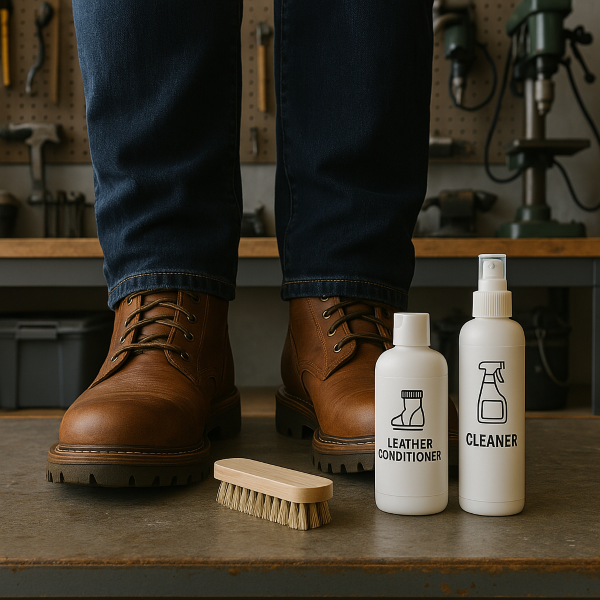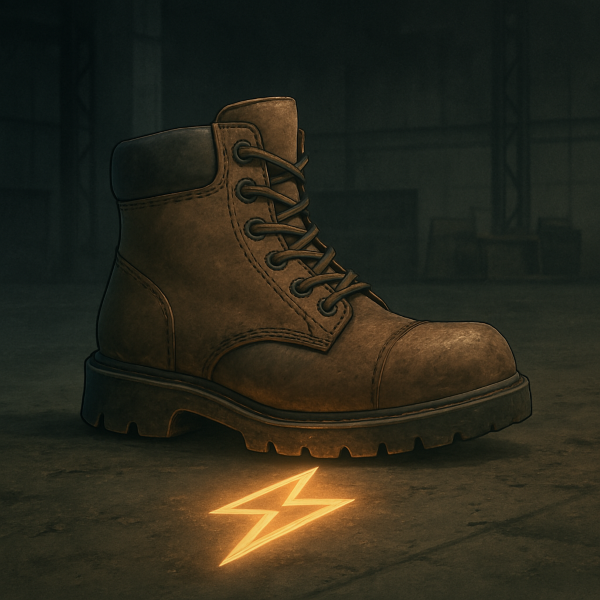How to Maintain Work Boots for Longevity
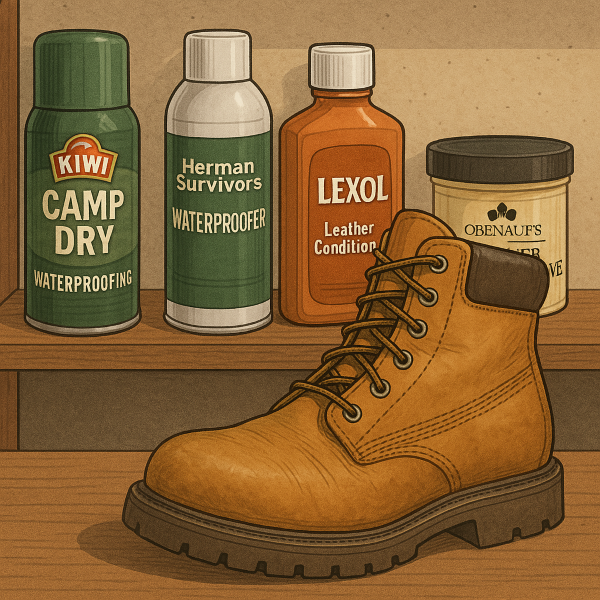
When it comes to tough jobs, your work boots are your most reliable companions. They shield you from hazards, provide stability on rugged terrain, and ensure your feet stay comfortable even during long shifts.
That’s why taking good care of them is essential. Well-maintained boots last longer, protect your investment, and help prevent foot-related injuries.
This guide will teach you practical, actionable steps to keep your work boots in excellent condition. From daily cleaning routines to proper storage techniques, we’ll cover everything you need to know to extend their lifespan, enhance their performance, and ultimately save money.
Daily Care and Cleaning
Your boots take a beating every day, collecting dirt, dust, and moisture. A little daily maintenance goes a long way.
Daily Brushing:
Begin each day by brushing off dirt and debris. Use a soft-bristled brush to gently remove surface particles. Not only does this keep your boots looking better, but it also prevents grime from breaking down the material over time.
Weekly Cleaning:
A deeper clean should be done once a week. For leather boots, use a damp cloth to wipe them down and remove stubborn stains. If your boots are made of synthetic materials, mild soap and water can work wonders. Make sure to dry them thoroughly afterward to avoid moisture damage.
Deep Cleaning:
When boots encounter heavy grime, it’s time to break out the specialized cleaners. Products specifically designed for leather or synthetic materials help remove tough stains without damaging the material. Always follow the manufacturer’s instructions and test a small area first.
Cleaning Frequency at a Glance
| Maintenance Task | Frequency | Tools Needed |
|---|---|---|
| Brushing | Daily | Soft-bristled brush |
| General Cleaning | Weekly | Damp cloth, mild soap |
| Deep Cleaning | As needed | Specialized cleaner |
Protecting and Waterproofing
Protecting your boots from the elements is crucial for long-term durability.
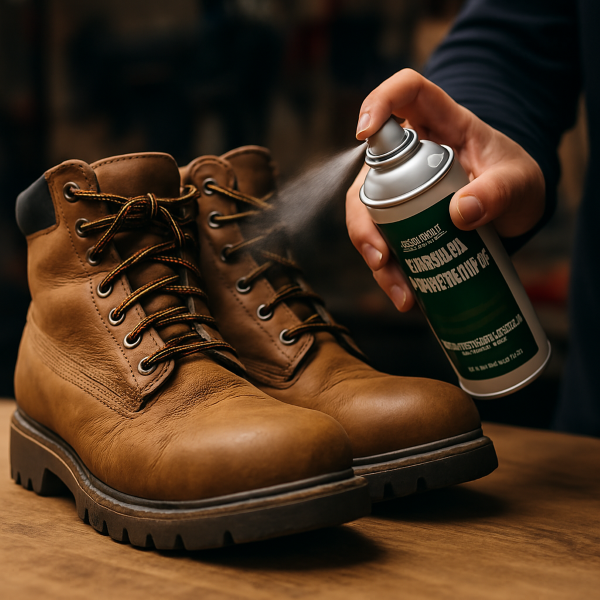
Waterproofing Sprays:
Waterproofing not only keeps your feet dry but also helps maintain the integrity of the boot material. Brands like Kiwi Camp Dry and Herman Survivors Waterproofer offer effective solutions. Apply the spray evenly over the boots and let them dry completely before use. Reapply every few months or after heavy exposure to water.
Leather Conditioners:
Leather boots, in particular, need extra care. Conditioning helps keep the leather soft, pliable, and less prone to cracking. Apply a high-quality leather conditioner after cleaning. Rub it in gently with a soft cloth, allowing it to penetrate deeply. This not only enhances the leather’s look but also prolongs its lifespan.
Comparison of Waterproofing and Conditioning Products
| Product Name | Type | Benefits |
|---|---|---|
| Kiwi Camp Dry | Waterproofing | Creates a water-resistant barrier |
| Herman Survivors Waterproofer | Waterproofing | Provides long-lasting water protection |
| Lexol Leather Conditioner | Conditioner | Keeps leather supple and prevents cracking |
| Obenauf’s Leather Preservative | Conditioner | Adds water resistance and nourishes leather |
Storage and Maintenance
Proper storage is often overlooked but plays a critical role in your boots’ longevity.
Proper Storage:
When you’re not wearing your boots, store them in a cool, dry place away from direct sunlight. Heat and moisture can degrade materials and shorten their life span. Consider using a dedicated shoe rack or closet organizer to keep them safe.
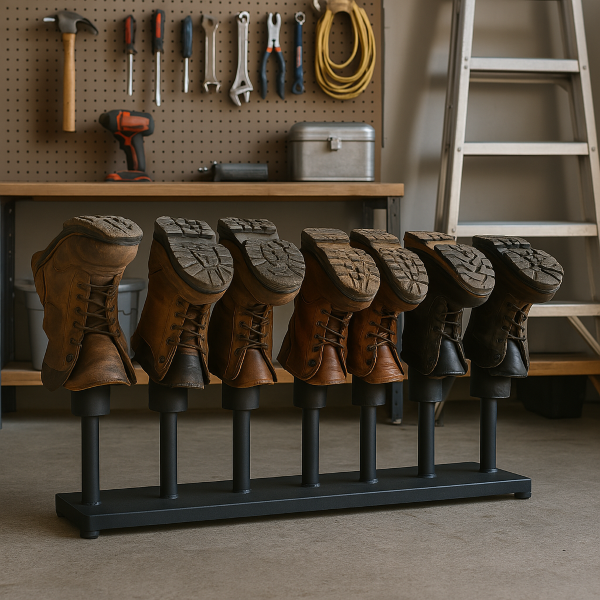
Use of Boot Trees:
Boot trees are an excellent investment. They help maintain your boots’ shape and prevent creasing. By inserting boot trees after every use, you can avoid misshapen footwear and prolong their comfort and durability.
Avoiding Hydrolysis:
Many boot soles are made from polyurethane, which can break down over time if stored improperly. This process, known as hydrolysis, occurs when boots are left unused for long periods. Regularly using your boots and storing them correctly can prevent this.
Image Caption:
[Image of a properly stored pair of boots with boot trees inserted, placed on a shoe rack away from direct sunlight and moisture.]
Additional Tips for Longevity
Break-In Period:
Rushing the break-in process can lead to discomfort and uneven wear. Gradually wear your new boots for short periods before relying on them for full shifts. This helps the material adapt to your foot shape and enhances long-term comfort.
ying and Fitting:
Improperly tied boots can cause unnecessary stress on the eyelets and material, leading to faster deterioration. Always tie your boots securely and ensure a proper fit. A snug fit prevents your feet from shifting inside the boots, which can cause uneven wear and discomfort.
Using Two Pairs:
Rotating between two pairs of boots allows each pair to rest and recover. This not only extends their overall life span but also ensures you always have a backup if one pair needs repairs.
Q: Why is it important to maintain work boots?
A: Properly maintaining your work boots helps extend their lifespan, ensures comfort, and keeps them performing at their best. It also saves you money by delaying the need for replacement boots.
Q: How often should I clean my work boots?
A: A quick brushing every day can prevent dirt buildup, while a more thorough cleaning should be done once a week. For heavy grime, use specialized cleaners as needed.
Q: What are the best products for waterproofing work boots?
A: Popular choices include Kiwi Camp Dry and Herman Survivors Waterproofer. These sprays create a water-resistant barrier, keeping your feet dry and protecting the material from water damage.
Q: What can I do to keep my leather boots from cracking?
A: Applying a leather conditioner regularly will help keep the leather supple, prevent cracking, and maintain the boots’ appearance and durability over time.
Q: How should I store my work boots when not in use?
A: Store your boots in a cool, dry place away from direct sunlight and moisture. Using boot trees can also help maintain their shape and prevent creasing.
Q: What is hydrolysis, and how can I avoid it?
A: Hydrolysis is the breakdown of polyurethane soles due to long-term storage without use. To avoid it, make sure to use your boots regularly and store them in proper conditions.
Q: Should I break in new work boots before using them for long shifts?
A: Yes, gradually wearing new boots for shorter periods helps them conform to your feet. This ensures greater comfort and prevents issues like blisters or uneven wear.
Q: Why is it helpful to rotate between two pairs of work boots?
A: Rotating between pairs allows each pair to rest and recover, extending their overall lifespan and ensuring you always have a backup pair ready to go.
Q: What are the key steps for tying and fitting work boots properly?
A: Always tie your boots securely to prevent slipping or uneven wear. A proper fit ensures that your feet remain stable and comfortable throughout the day.
Q: Can maintaining my work boots really save me money?
A: Absolutely! By extending the life of your boots through proper maintenance, you reduce the need for frequent replacements, which can save a significant amount of money over time.
Recap:
- Perform daily brushing and weekly cleanings to prevent dirt buildup.
- Protect your boots with waterproofing sprays and condition leather regularly.
- Store your boots properly and use boot trees to maintain their shape.
- Rotate between pairs and take the time to break in new boots for a longer-lasting fit.
- Tie boots securely and choose products designed for long-term performance.
Final Thoughts:
Investing a little time in maintaining your work boots pays off in comfort, safety, and savings. By following these steps, you’ll enjoy boots that not only look good but also stand up to the toughest tasks day after day. Keep these tips handy and let your well-cared-for boots carry you further in every job you tackle.

